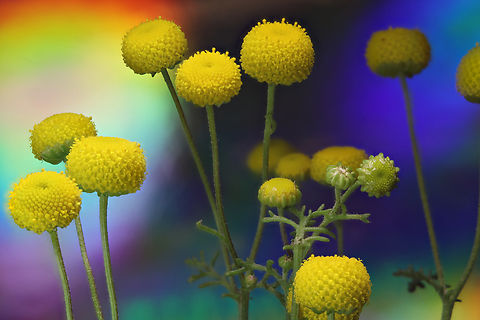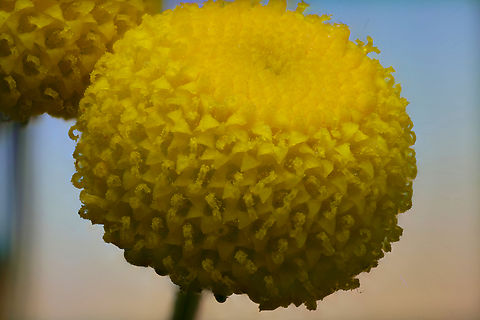
Appearance
Globe chamomile is a straggly, branching annual plant with a strong smell, growing up to 2 ft tall. The bipinnate or tripinnate leaves have a fleshy midrib which widens at the base. The globular flowers are borne in paniculate flower heads. There are no ray florets and the disc florets are yellow.
Naming
Synonyms include "Matricaria globifera" because it was previously in the "Matricaria" genus, and "Pentzia globifera", named for 18th century Swedish botanist Carolus Johannes Pentz.The common name "stinknet" reflects the plant's strong odor.
Status
Globe chamomile is a species of "least concern" in South Africa.Habitat
Globe chamomile is native to South Africa and Lesotho. It is also found in the Australian states of Victoria and Western Australia.In North America, globe chamomile grows from seed in November to January when it begins flowering and setting new seeds. With sufficient moisture, three generations can grow by April. Wind-borne seed transportation spreads the plant which takes root in sunny, disturbed soil in natural and cultivated areas. Plants can cause skin irritation or allergic reaction through contact with the plant or inhalation of its pollen.
A single plant can contain up to 4000 flower balls, each ball being made up of hundreds of flowers.
References:
Some text fragments are auto parsed from Wikipedia.